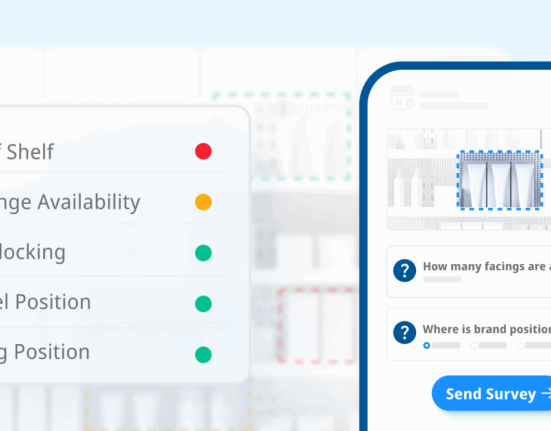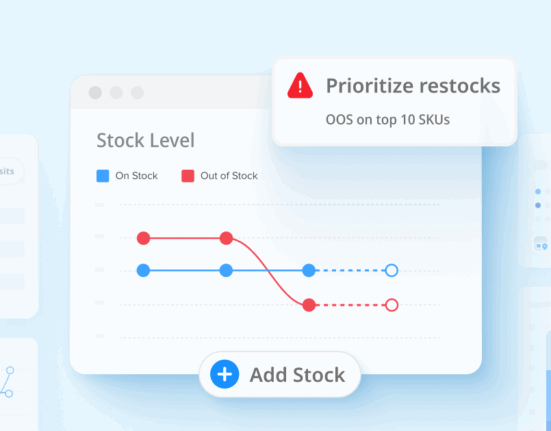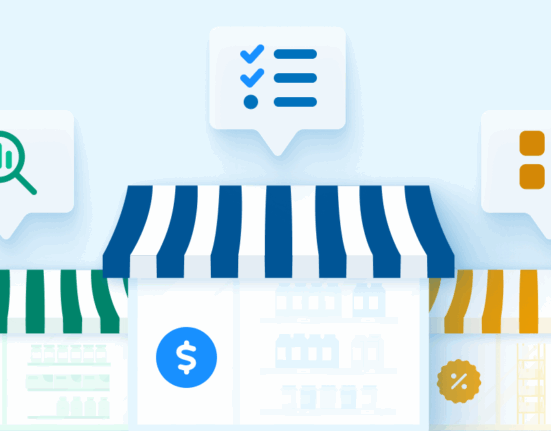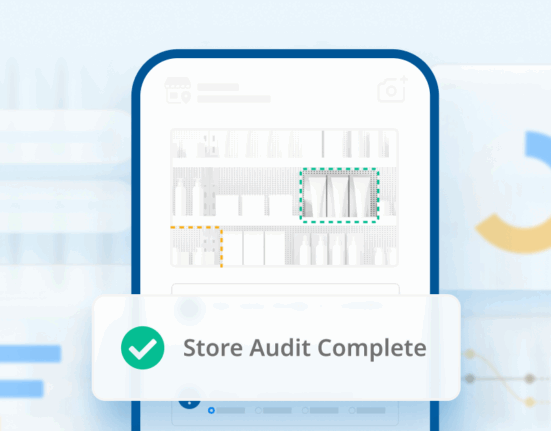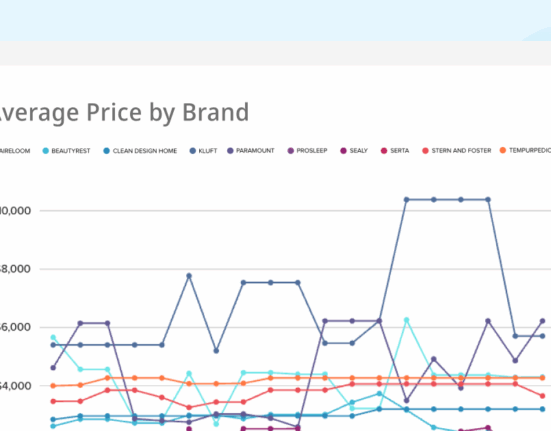Are you looking to get a better understanding of your potential customers? Building buyer personas can help you gain insights into the needs, wants, and behaviors of different customer segments, which leads to a more streamlined marketing strategy, where you can focus on the shoppers you know are the best fit for your business.
The modern customer highly regards personalized shopping experiences, so the key is creating thorough, accurate buyer personas that tell you all you need to know about your ideal shoppers.
But creating these isn’t as easy as it sounds. It requires research, analysis, creativity – and often a lot of trial-and-error.
Not all buyer personas are created equal. Strong, actionable ones have information that supports the day-to-day operations of all departments within your company.
They provide guidance on how to design and develop products. They also shed light on how to market and sell those products, plus a little bit of help for every step in between.
So, the question is, how do you create buyer personas that will bring the most benefit to your business?

What Is a Buyer Persona?
Essentially, a buyer persona, sometimes called a customer persona, is a detailed representation of your ideal customers. Personas explore the who, what, where, when, and why of your target customers.
Businesses use buyer personas to identify the people they are trying to reach with their products or services. They will look at details such as:
- Demographics
- Location
- Personal Interests
- Goals
- Buying Habits
- Pain Points
To create a buyer persona, companies may do research online or through surveys and interviews with their existing customers or prospective customers.
Once the business has created a few customer personas, it can use them when making decisions about which products or services it should offer and how it should market them.
For example, if you are looking to introduce a new product then it should fall within the needs and interests of at least one of your customer personas. If not, then you might want to reconsider your plan.
Another way businesses can use their buyer personas is by creating content for their website or social media accounts that speaks directly to their target audience’s interests and needs. This content will draw in potential customers who fit the shopper profiles created by the business.
Finally, businesses can also use their buyer personas when thinking about where best to advertise so they can reach the right audience. With the buyer persona in mind, a business can target its marketing messages toward websites and publications that are frequented by their ideal customers.
Essentially, a buyer persona, sometimes called a customer persona, is a detailed representation of your ideal customers.
What Are Negative Buyer Personas?
Just as a business would want to create a buyer persona for their ideal customers, some companies also create personas for the customers that least match their products. These are called negative buyer personas.
For example, if a business focuses on selling products to beginners of a trade, then there is no need to target professionals who are more advanced and have no need for the product.
Having these negative buyer personas can help businesses to avoid marketing toward the wrong demographics and wasting marketing efforts on groups who are very unlikely to complete purchases.

Why Are Buyer Personas Important?
Buyer personas are important for businesses because they help them better understand their customers. They can create a picture of who their customers are and what kind of products or services would appeal to them.
Knowing who your ideal customer is can also help you make decisions about how best to market your product or service, as well as which features you should include in the design and development process. This can save time and money in the long run by helping you target the right people with the right message.
Having customer personas also helps businesses create more effective sales techniques, as it gives them an idea of what kind of language is best to use when talking to potential buyers, as well as which type of incentives might be most appealing to those buyers.
Buyer personas allow businesses to develop relationships with their customers by understanding their needs and preferences better than ever before! This leads to a stronger bond between companies and their customers that then results in higher loyalty rates from those same buyers!
On top of this, buyer personas allow businesses to develop stronger and more personal relationships with their customers by understanding their needs and preferences beyond the surface level. This can lead to an increase in loyal customers and solidify brand customer relationships.
How to Create Buyer Personas
Creating your buyer personas may feel like a huge, daunting task. But, in reality, it can be done in just few steps—as long as you do them well. Take care as you move throughout the process and keep your end goals in mind.
No. 1: Understand Your Target Audience
Before you can begin creating buyer personas, it’s important to understand your target audience and their needs, wants, and goals. Take the time to consider who they are, what motivates them, their preferences, and behaviors.
Start with an analysis of all your sales in the past calendar year. If you’re a B2B business, you’ll have access to customer information such as job title, company size, and average deal size. If you’re B2C, you should look at demographics, average basket size, and products sold as starting points.
Either way, the goal is simple: find out who creates the most revenue. These should be your basic buyer personas.
No. 2: Collect Data
Once you have a better understanding of your target audience, the next step is collecting data about them by using surveys, interviews or other research methods. This will help you narrow down the characteristics of your buyers that will form the basis for your personas.
No. 3: Analyze the Data
After collecting data from your research efforts, analyze it to identify patterns and trends in order to determine who your buyer personas are. This could include demographics such as age range, gender or location but also look into psychographics such as values, interests and lifestyle decisions.
No. 4: Create Your Buyer Personas
Using the insights from analyzing the data collected is where you start to create your buyer personas – identify individuals with common characteristics that can represent each segment of customers that will be interacting with your business or brand. Ensure each persona includes a name and photo along with detailed descriptions of interests, needs and pain points that fit each group’s preference when buying products or services from you.
No. 5: Test & Refine Personas
After creating your buyer personas, test them out in different settings like market segments or marketing campaigns, to get feedback on how well they resonate with customers – this will provide insights on whether refinements need to be made for them to be more effective within those contexts. Refine based on any feedback received until they accurately represent customer segments as much as possible without losing valuable information about each buyer persona template you created.
You want to target the people who are buying the most from you right now. This will also help you decide how many different personas to create. Some business models have dozens of different personas, while others may have one. Look at revenue data to see if your business is selling to many different types of buyers or not, then go from there.

If all these steps seem like too much for you then consider turning to a buyer persona template. These are easy to find and use but do not guarantee the same amount of thoroughness and customization as creating your own. If possible, use a template as a starting point and build up from there.
Create Actionable Personas
Locking down your key buyer personas is an important starting point, but it doesn’t mean you’ll immediately have great, actionable personas to work off of. You’ll need to shift your attention to the core of the personas.
To ensure your buyer personas are based on more than just assumptions, it is important that you have data-backed evidence from market research, in order to make better decisions about targeting specific audiences. This could include analyzing actual purchase data or digging into customer feedback through surveys or interviews. Doing this will help ensure that your buyer personas are based on real consumer behaviors and trends rather than just guesswork.
A great way to make sure your buyer personas remain actionable for any length of time is by regularly updating them over time as markets evolve and customer preferences change. This means actively monitoring customer feedback from various sources as well as conducting regular competitive analyses in order to stay ahead of trends in customer behavior and new advances in technology.
Doing this ensures that your sales team and marketing team always have access to timely information that can be used when developing strategies or making operational decisions related directly back to those buyer personas originally created months—or even years—ago.
You’ll need to maintain a list of the following details for each of your core personas:
- Persona Name – This can be their job title, job function, or something catchy, like “Marketing Manager Matt.”
- Brief Bio – Write a one-paragraph summary of their job role, as you’d find on a resume, or their role within their family or social circle if B2C.
- Demographic Information – Jot down this ideal buyer’s age, gender, family, geographic location, and estimated income.
- Your Products/Services – Make a note of which of your products or services this person buys.
- Your Solutions – Expand on those products by providing more detail about the problems you solve for this buyer.
- Their Company/Industry – Include a few example companies that this buyer would work for if B2B.
- Their KPIs – How do they measure success in their daily job or life? How can your business support those KPIs?
- Their Goals – Write down what this person wants to accomplish, what they value, and what their pains are, among other objectives they may have.

This list may seem like a lot, but it’ll give great insight into who your current customers are and who you want to target with different buyer personas.
There are multiple ways you can leverage personas to drive value for your business.
What to Do With Your Personas
So, now you’ve finished creating your buyer personas. The question is: what should you do with them?
This is where the real fun begins. There are multiple ways you can leverage personas to drive value for your business.
For starters, personas should be shared internally. Every department within your organization should know who your personas are and what makes these top customers tick.
With these, you’ll have a strong understanding of their pain points and how your products directly solve those issues. This knowledge can positively influence the development of new products, the interactions employees have with customers, and how you sell to your audience.
Second, you should use buyer personas as part of your marketing strategies and sales tools. Personas can work great for inbound marketing on a website. Develop buyer persona landing pages so website visitors can self-select which audience they fall under. The copy on those first persona template pages will address their pain points and your solutions, ideally converting at a higher rate than more general landing pages.
You can also have outbound sales teams use personas to craft targeted, customized messaging. They’ll have a better sense of who they’re talking with, either via email, phone, or in person. Even better, they will be able to guide the conversation toward the products you sell that can specifically resolve the buyer’s pain points—because they’ll know exactly what those pain points are already.
A great way to make sure your buyer personas remain actionable for any length of time is by regularly updating them over time as markets evolve and customer preferences change.
Don’t Be Afraid to Iterate and Evolve
At the end of the day, your buyer personas should be a tool to help you better understand and serve your target audience. By taking into account their needs, wants, beliefs and values when crafting marketing messages or product features, you can more accurately reach them with content that resonates.
When creating buyer personas for any given industry segment it is important to remember that they are not static; buyers’ preferences change over time so make sure to review yours regularly to stay up to date on current trends. With these tips as a guide, you now have all the information necessary to create effective buyer personas for your business!
To learn more about how to influence the consumer experience, visit Wiser.com today.
Editor’s Note: Contributing writer is Matt Ellsworth. This post was originally published in February 2020 and has since been updated and refreshed for readability and accuracy.





